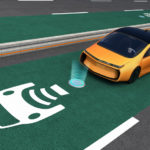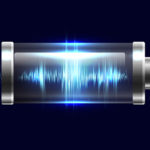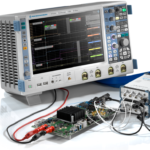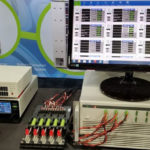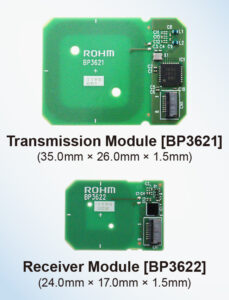 Rohm Semiconductor announced they have developed compact wireless charger modules with an integrated antenna board: the BP3621 (transmitter) and the BP3622 (receiver). These new modules allow designers to add wireless power supply functionality to smaller devices such as smart tags/cards or PC peripherals.
Rohm Semiconductor announced they have developed compact wireless charger modules with an integrated antenna board: the BP3621 (transmitter) and the BP3622 (receiver). These new modules allow designers to add wireless power supply functionality to smaller devices such as smart tags/cards or PC peripherals.
Wireless power supplies are increasingly being adopted in smartphones, smart watches, and other compact devices. By utilizing wireless power technology, devices can improve water and dust resistance by eliminating the need for terminal contacts. However, the existing low-frequency standards for power transmission – coupled with restrictive antenna designs – limit the degree of miniaturization that can be achieved. These limiting factors are accelerating the demand for standards and methods that can be universally adopted in compact devices. In addition, the power transmission efficiency can vary depending on the antenna shape, size, and distance. Therefore, it is often necessary to repeat prototyping, adjustment, and evaluation on the system – representing a large development burden for antenna design and layout.
In response, ROHM has developed 13.56MHz wireless charging modules that allow users to easily add wireless power functionality to thin and compact devices. Measuring just 20mm2 to 30mm2 each, the BP3621 (transmitter) and BP3622 (receiver) incorporates an optimized antenna (coil) layout. It enables configuration of a compact wireless charging system using the 13.56MHz frequency band to deliver up to 200mW. The full-flat backside board structure facilitates mounting in thin, compact devices – contributing to greater flexibility in chassis design in contrast to conventional solutions. Moreover, using the transmitter and receiver modules as a pair can significantly reduce the development load for prototyping, adjustment, evaluation, and other processes necessary to achieve high-efficiency wireless charging. At the same time, the built-in antenna supports bi-directional data communication and NFC Forum Type 3 Tag operation, expanding applicability.
The modules are available for purchase through online distributors Digi-Key, Mouser, and Farnell.

